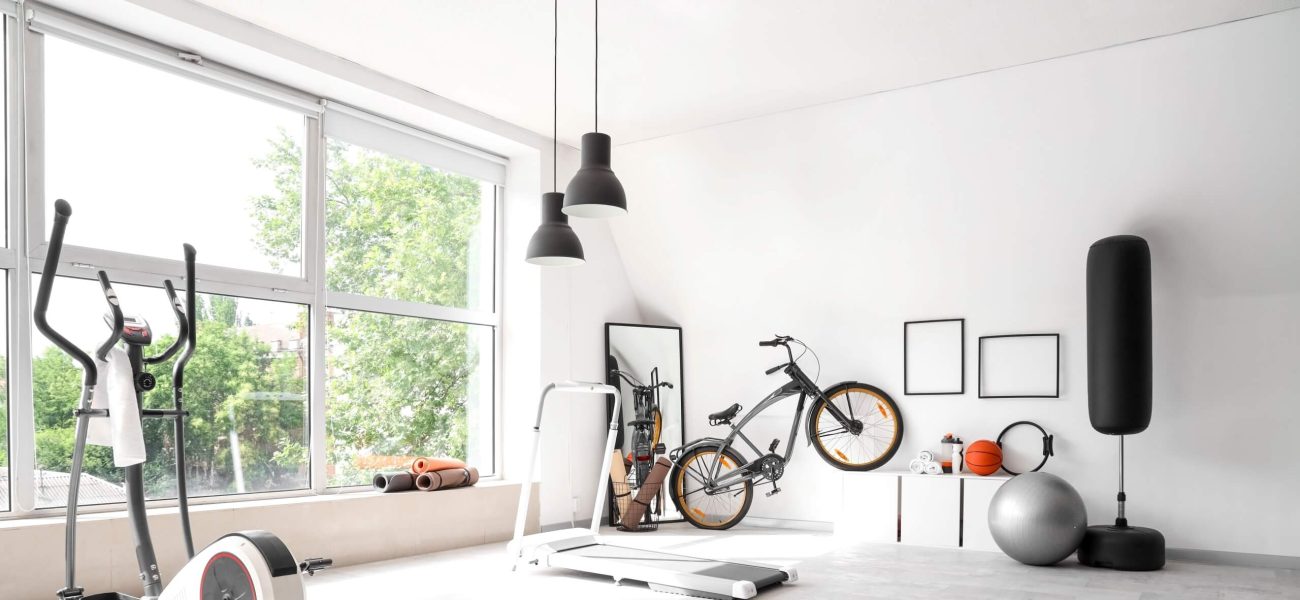Setting up a home gym is a great way to ensure you can work out conveniently and consistently. While equipment like dumbbells, kettlebells, and treadmills are often the primary focus, the foundation of your home gym literally lies in the flooring. These aspects not only enhance the safety and efficiency of your workouts but also contribute to the overall aesthetic and functionality of your space. In this blog, we will delve into the essentials of garage flooring and how it can transform your home gym experience.
Why flooring matters
When it comes to creating a home gym, the flooring is a critical element. It needs to withstand the impact of weights, provide adequate grip to prevent slipping, and offer cushioning to protect your joints during workouts.
The right flooring can also help in soundproofing your gym, which is particularly beneficial if you share your living space with others.
Types of flooring for home gyms
There are several types of flooring suitable for home gyms, each with its own unique benefits:
- Rubber flooring: Durable and resilient, rubber flooring is a popular choice for home gyms. It provides excellent shock absorption, making it ideal for weightlifting and high-impact exercises. It is also easy to clean and maintain.
- Foam tiles: These are great for providing extra cushioning, which is beneficial for exercises that involve a lot of floor work, like yoga or Pilates. However, foam tiles might not be suitable for heavy weightlifting as they can compress under heavy loads.
- Vinyl flooring: Vinyl is a versatile option that combines durability with aesthetic appeal. It is resistant to moisture and easy to clean, making it a good choice for areas prone to sweat and spills.
- Carpet tiles: While not as common, carpet tiles can offer a comfortable and warm surface, particularly in colder climates. They are suitable for low-impact exercises but may not be ideal for heavy lifting.
Installing garage flooring
Installing garage flooring can be a DIY project, but it requires careful planning and preparation. Here are some steps to guide you:
- Prepare the surface: Clean the garage floor thoroughly to remove any dirt, dust, and debris. Repair any cracks or uneven areas to ensure a smooth surface for the new flooring.
- Measure the area: Accurately measure the dimensions of your garage to determine how much flooring material you will need. It’s always a good idea to purchase a little extra to account for any mistakes or future repairs.
- Lay the flooring: Follow the manufacturer’s instructions for laying the flooring. For tiles, start from the centre of the room and work your way outwards. For rolls, align the edges carefully and secure them with adhesive if required.
- Finish the edges: Use a utility knife to trim any excess material and ensure a snug fit around the edges and corners. Install edging strips if necessary to create a seamless finish.
Efficient storage solutions
The need for organisation
A well-organised home gym is crucial for safety and efficiency. Storing your equipment properly prevents accidents, maximises space, and makes it easier to find what you need for your workout. Storage solutions should be tailored to the types of equipment you have and the available space in your garage.
Types of storage containers
- Shelving units: Adjustable shelving units are perfect for storing a variety of equipment, from small weights and kettlebells to resistance bands and yoga mats. They keep everything visible and easily accessible.
- Wall-mounted racks: Utilise vertical space by installing wall-mounted racks for items like barbells, weight plates, and bicycles. This not only frees up floor space but also keeps heavy items off the ground, reducing the risk of damage.
- Storage boxes/bins: Transparent storage boxes or bins are ideal for organising smaller items such as workout gloves, jump ropes, and fitness accessories. Label the bins to quickly locate what you need, when you need it.
- Cabinets and lockers: Secure storage options like cabinets and lockers are great for keeping valuable or personal items safe. They also help in maintaining a clean and tidy appearance.
DIY storage solutions
Creating your own storage solutions can be a cost-effective and customised way to organise your home gym. Here are some DIY ideas:
- PVC pipe dumbbell rack: Construct a simple and sturdy dumbbell rack using PVC pipes. This can be customised to fit the exact size of your dumbbells and painted to match your gym’s decor.
- Pegboard wall: Install a pegboard on one of your garage walls to hang smaller items like resistance bands, jump ropes, and towels. This keeps them within easy reach and off the floor.
- Wooden storage bench: Build a wooden bench with storage compartments underneath. This provides seating for rest periods and a place to store equipment like shoes, mats, and small weights.
Integrating flooring and storage
Creating a cohesive design
To create a home gym that is both functional and visually appealing, it’s important to integrate your flooring and storage solutions. Choose flooring that complements the colours and materials of your storage containers. For example, black rubber flooring pairs well with metal shelving units, while foam tiles can be matched with wooden storage benches for a more cohesive look.
Optimising space
In a garage gym, space optimisation is key. Arrange your storage solutions in a way that leaves ample room for movement and exercise. Place frequently used items within easy reach, and store seasonal or less-used equipment higher up or towards the back. Consider multi-functional furniture, such as a storage bench, to maximise utility.
Maintaining cleanliness
A clean gym is a pleasant gym. Ensure your flooring is easy to clean and that storage containers can be wiped down regularly. Rubber and vinyl flooring are particularly low maintenance, requiring just a quick sweep and occasional mop. Transparent storage bins help in spotting dust and dirt, making it easier to keep your gym tidy.
In conclusion
Building a home gym is more than just investing in equipment. The right flooring and storage solutions are essential for creating a safe, efficient, and enjoyable workout environment.
By focusing on these often overlooked elements, you can transform your garage into a well-organised and aesthetically pleasing fitness space. Whether you’re lifting heavy weights or practising yoga, the foundation of your gym will support every move you make.
So, take the time to plan your flooring and storage carefully – your future self will thank you.




















